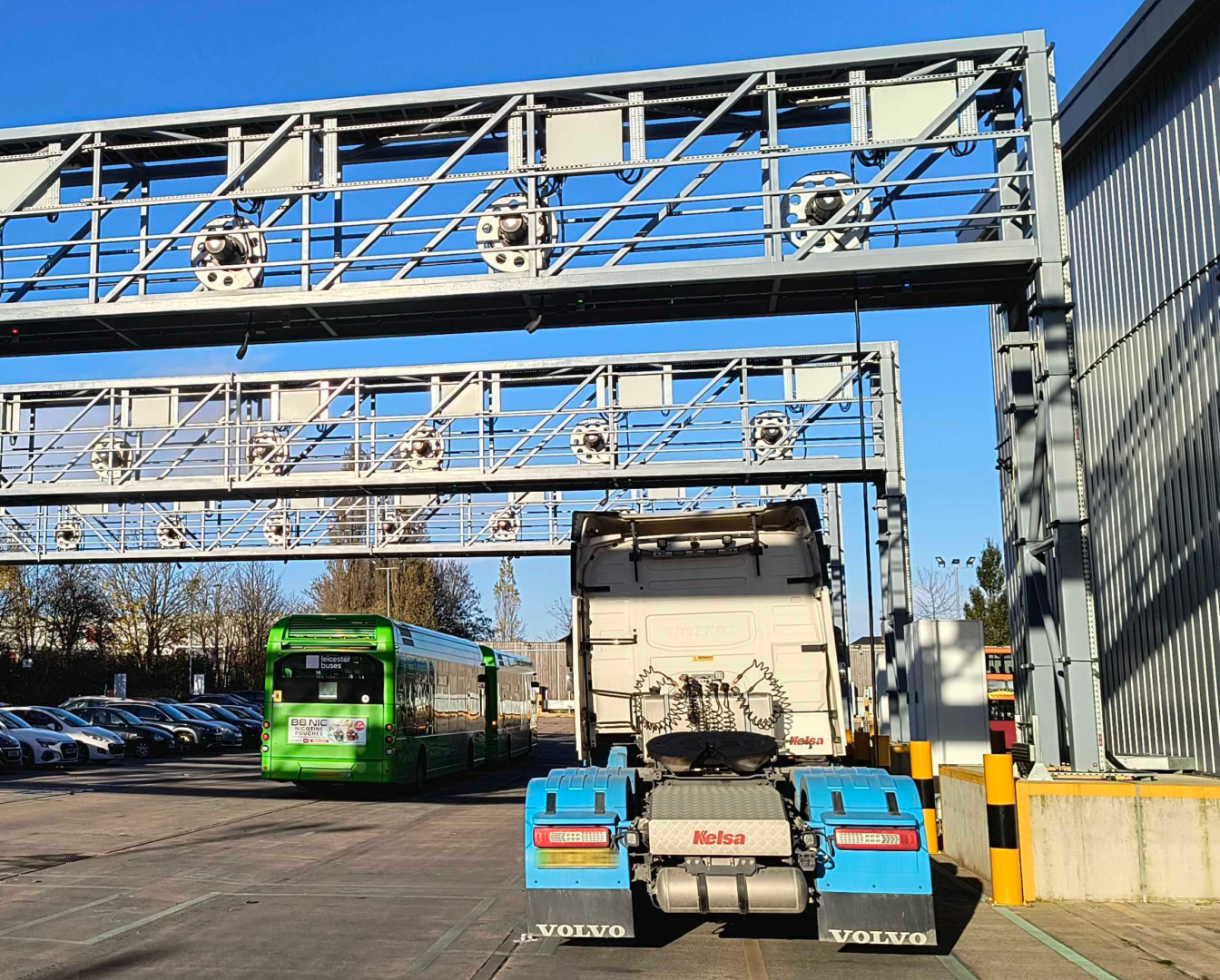
Paua PINS: Shared EV Charging Infrastructure
Case Study
Project Overview
The Paua PINS (Private Infrastructure Network Solution) project, funded by Innovate UK, demonstrated the role that a shared private infrastructure network can provide to support local authorities and businesses as they electrify. The wide variety of depot types across organisations means that the specific challenges facing fleets can potentially be overcome by using another company’s infrastructure.
The Challenge
The UK’s trajectory towards EV adoption is clear, with ambitious targets for EV uptake and a ban on new internal combustion engine vehicle (ICEV) sales by 2035. At the time of writing, Cenex modelling projects 28 million EVs on UK roads by 2040[1], a rapid transition with significant implications for fleets and depots. However, there are many fleets that are currently unable to complete their daily operations using electric vehicles (EVs), due to range concerns from particularly energy intensive duties, or due to being unable to charge at their own depots. For these vehicles, public charging can be an unacceptable option due to security, availability or cost concerns.
[1] Home – National EV Insight & Support | Delivered by Cenex
The Development
When a visiting fleet has challenges with charging their EVs, and when PINS is an attractive option to resolve this, they must first understand what type of depot would be best for them to share with. To make this process easier from a visiting fleet perspective, and to be able to quantify the likelihood and usefulness of a specific fleet to work with each depot type for chargepoint sharing, Cenex has produced a matchmaking tool. The tool defines several depot archetypes and allows a fleet to determine the types of organisations to approach.
Cenex carried out extensive stakeholder engagement through surveys, interviews and workshops to understand the key policy, social, technical and legal aspects of PINS, including both key opportunities and barriers for its uptake.
Cenex also performed quantitative modelling to understand the economic and environmental implications of PINS. This included the business case assessment using real-world data from the point of view of both visiting fleets and host organisations.
A white paper was published detailing the above methodology and the results shown below.
The Result
- Policy recommendations: simplify chargepoint planning permissions, provide clear depot-sharing guidelines, support collaboration via platforms like Paua Share, and incentivise depot-sharing participation.
- Social recommendations: engaging staff to understand their concerns, communicating progress clearly, providing training on shared charging use and benefits, and monitoring feedback to continuously improve practices.
- Technical recommendations: integrating systems using open protocols, using real-time platforms like Paua Share for scheduling and availability, setting up clear payment, access, and security protocols, allocating dedicated visitor charging bays, and providing maintenance plans and troubleshooting guides.
- Legal recommendations: create formal liability agreements, partner with EMSPs/CPOs who operate under clear contracts and ensure GDPR compliance for all shared data.
- Economic case for visiting fleets: Under normal/baseline conditions, fleets can save between £1.8 and £3.1 per vehicle and day (9-19% of charging costs) if they use PINS compared to using public chargepoints, which can increase to between £5.4 and £9.7 per vehicle and day (26-50% of charging costs) under more favourable circumstances.
- Economic case for host organisations: they can achieve significant returns on investment (ROI) on their infrastructure after 10 years if their chargers are used for 1 hour/day by visiting organisations: 12-45% for slow and fast chargepoints, and 27-63% for rapid and ultra-rapid chargepoints.
- Environmental case: enabled by charging at other organisations’ sites, visiting fleets can electrify additional vehicles that they would not otherwise. This can unlock emission savings compared to ICEVs of 20-37% well-to-wheel (WTW) CO2e, 28-46% NOx and 26-46% PM2.5 (particulate matter).



